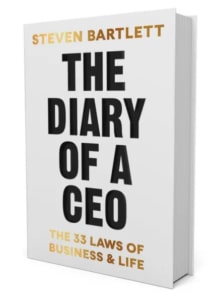Build Your Business’s Creditworthiness: A Guide for Business Owners
Your company’s credit management record, its “creditworthiness,” affects your ability to secure loans, negotiate with suppliers, and even win contracts. But what exactly is creditworthiness, and how can you improve it?
This guide breaks down the essentials and introduces a powerful tool that can help: invoice factoring.
What Is Creditworthiness?
Creditworthiness is a measure of how likely you are to repay debts on time. It’s not just about your credit score—though that’s part of it. Lenders, suppliers, and potential business partners look at several factors to gauge your creditworthiness:
- Payment history
- Current debt levels
- Length of credit history
- Types of credit used
- Recent credit inquiries
They also consider your business’s financial health, including:
- Cash flow
- Revenue trends
- Profit margins
- Assets and liabilities
Why Creditworthiness Matters
Good credit opens doors. It can help you:
- Secure loans with better terms
- Negotiate favorable payment terms with suppliers
- Win contracts that require financial stability
- Attract investors
- Lease equipment or property more easily
Poor credit, on the other hand, can lead to higher interest rates, stricter payment terms, or even rejection of loans and contracts.
How to Assess Your Creditworthiness
Start by pulling your business credit reports from major bureaus like Dun & Bradstreet, Experian, and Equifax. Review them for accuracy and get familiar with your scores.
Next, calculate these key financial ratios:
- Current Ratio = Current Assets / Current Liabilities
- Aim for 2:1 or higher
- Debt-to-Equity Ratio = Total Liabilities / Shareholders’ Equity
- Lower is generally better; under 2 is good for most industries
- Debt Service Coverage Ratio = Net Operating Income / Total Debt Service
- Aim for 1.25 or higher
These ratios give lenders a snapshot of your ability to pay debts and manage cash flow.
Strategies to Improve Creditworthiness
- Pay bills on time, every time
- Keep credit utilization low (under 30% of available credit)
- Maintain a mix of credit types
- Build a long credit history
- Monitor your credit reports and dispute any errors
- Improve your cash flow management
That last point—cash flow management—is where many businesses struggle. This is where invoice factoring can be a game-changer.
How Invoice Factoring Boosts Creditworthiness
Invoice factoring is a financial tool that converts your unpaid invoices into immediate cash. Here’s how it works:
- You complete work for a client
- You invoice the client
- Instead of waiting 30, 60, or 90 days for payment, you sell the invoice to a factoring company
- The factoring company pays you most of the invoice value upfront (usually 80-90%)
- When your client pays the invoice, you get the remainder, minus the factoring company’s fee
This process offers several benefits that can improve your creditworthiness:
1. Improved Cash Flow
With factoring, you get paid faster. This steady cash flow helps you pay your own bills on time, avoiding late payments that could harm your credit score.
2. Reduced Reliance on Traditional Loans
Factoring isn’t a loan. It doesn’t show up as debt on your balance sheet. This can improve your debt-to-income ratio and overall financial health in the eyes of lenders.
3. Credit Checks on Customers
Many factoring companies perform credit checks on your customers before buying invoices. This helps you avoid extending credit to risky clients, reducing potential losses that could hurt your own creditworthiness.
4. Builds Business Credit
Consistent use of factoring and timely repayments can help build a positive credit history for your business.
5. Enables Growth Without Debt
Factoring provides working capital without incurring debt. This allows you to take on new opportunities and grow your business without negatively impacting your credit profile.
6. Stabilizes Finances
Regular cash flow from factoring can help your business weather seasonal fluctuations or unexpected expenses. This financial stability contributes to good credit.
7. Improves Financial Ratios
By converting accounts receivable into cash, factoring can improve your current ratio and other financial metrics that lenders and credit agencies consider.
Real-World Example
Let’s say you run a manufacturing company. You land a big contract, but it requires investing in new equipment and hiring more staff. You’re worried about cash flow while waiting for payment on your invoices.
Here’s how factoring could help:
- You complete the work and invoice your client for $100,000, due in 60 days.
- Instead of waiting, you factor the invoice.
- The factoring company pays you $85,000 upfront (85% of the invoice value).
- You use this cash to pay for equipment, staff, and other expenses on time.
- When your client pays in 60 days, you receive the remaining $15,000, minus the factoring fee.
In this scenario, factoring allowed you to:
- Take on a large contract without cash flow worries
- Pay your bills on time, maintaining good credit
- Avoid taking out a loan, keeping your debt levels low
- Demonstrate financial stability to future clients and lenders
Is Factoring Right for Your Business?
Invoice factoring can be an excellent tool for improving creditworthiness. Consider factoring if:
- You have creditworthy commercial clients
- You often wait 30 days or more for invoice payments
- You need working capital to grow or stabilize your business
- Traditional loans are hard to get or too expensive
Remember, factoring does come with fees. Make sure to calculate the cost against the benefits before deciding.
Building credit takes time … so start building today
Your business needs credit to grow. Access to credit is the result of the intelligent stewardship of the credit you have now. By understanding creditworthiness, how it’s measured, and how to improve it, you’re taking an important step toward financial stability and growth. Tools like invoice factoring can play a crucial role in this process, providing the cash flow you need to meet obligations, seize opportunities, and build a strong credit profile.
Remember, good credit isn’t built overnight. It takes consistent effort and smart financial management. But with the right strategies—and perhaps the help of invoice factoring—you can build a creditworthy business that opens doors to new opportunities and success. If you’d like to see how invoice factoring could help you build your business’s credit, reach out. We’d be glad to help you sort through your options.




























